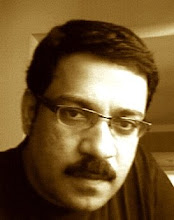
Alexey Beliayev-Guintovt, the 2008 winner of Russia’s Kandinsky Prize, on the struggle for the future of Russian art.
On 8 December, Beliayev-Guintovt was known only to the small community of people who closely follow the Russian contemporary art scene. But overnight he became one of the most talked-about Russian artists in the past two decades. “Before the prize, my website had only a few hundred hits a day,” he says. “Now it has several thousand a day.”
The Art Newspaper is the first publication invited to visit his modest three-room apartment/art studio, in a working-class neighbourhood in his native city, Moscow. The walls of one room are decorated with a 19th-century print featuring Napoleon at Waterloo in 1814, and a Soviet banner emblazoned with the words “Workers of the World Unite”. There is a bust of Lenin on the shelf. The furniture is late 19th century, except for an ornate chair that Beliayev-Guintovt says is probably 18th-century Persian. “I call it my Eurasian throne,” he says.
The television is playing a 1937 Soviet propaganda film showing Stalin inspecting a parade of robust athletes on Red Square. “This was basically a parade of Eurasian athletes; just look at the faces,” he says. The screen shows the youthful features of Slavs, Central Asians and people from the Caucasus region. “My next project will be based on this parade,” he adds. “I want to do a Eurasian parade of the future, depicted in about 15 large paintings. I want to give a futuristic view to the Soviet-Stalinist aesthetic.”
Beliayev-Guintovt doesn't hide his fondness for the Stalinist-era aesthetic, and he is uncomfortable when it comes to passing judgment on the Soviet dictator. “I had family members on both sides during the Stalin era. Some worked for the NKVD (secret police), while others ended up in the Gulag.”
“My style unites space and time, and Eurasian ideals are very prominent,” he says. “Art in Russia has always had a very strong social component. I am at the epicentre of a conservative revolutionary movement that includes many nationalities, from Islamic mystics to Russian Orthodox old believers.”
Beliayev-Guintovt says that contemporary art in Russia, as it ascribes to current international art trends, is run by a “totalitarian sect” and that “modernists are pushing Russia into infernal darkness”.
“The controversy over my art is a classic battle between icon painters and iconoclasts,” he says. “They want to destroy the sacredness of images, and I want to exalt it. This is a very serious struggle over the future of Russian art, and with me getting the Kandinsky Prize, they’ve lost a major battle.”
During Perestroika in the late 1980s, Beliayev-Guintovt, born in 1965, dabbled in a variety of western youth counter-cultures. “I was a hippie, a punk, a new waver,” he says. He began his artistic career in 1985, but his big break came in 1994 when gallerist and artist Alexander Yakut took him under his wing.
His painting technique involves covering the canvas with gold leaf and creating an image with a stencil. He then dabs his palms in paint and presses them onto the canvas, his hands working as his brush. “I don't sign my work because my handprint can’t be faked,” he says. “My images might look traditional, but the texture and technique is certainly contemporary. My method combines the traditions of icon painting with the technology of Soviet avant-garde poster-making.”
Today, promoting his Eurasian ideas is Beliayev-Guintovt’s paramount concern. In essence, these ideas call for Russia to turn away from the west and towards the east, and strive for a rebirth of the Russian empire in its tsarist-era borders. Regarding art, he supports “the righteousness of classicism” and “the power of beauty”. Yet he admits his art manifestos are also intended to poke fun at and provoke his detractors on the artistic Left. This of course leaves one wondering whether all his talk about ideology is serious or just an artistic ruse.
John Varoli | 28.1.09 |

No comments:
Post a Comment